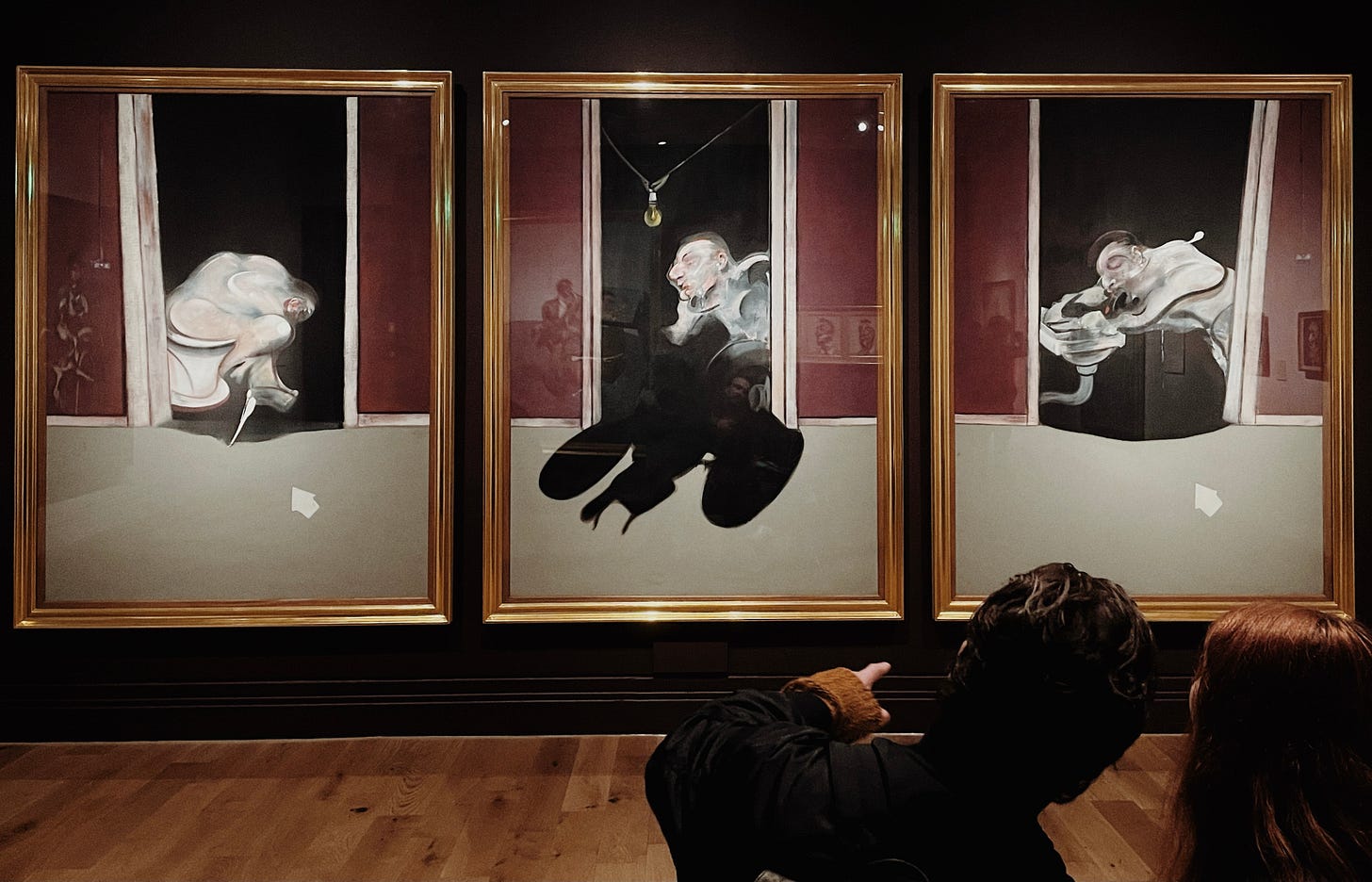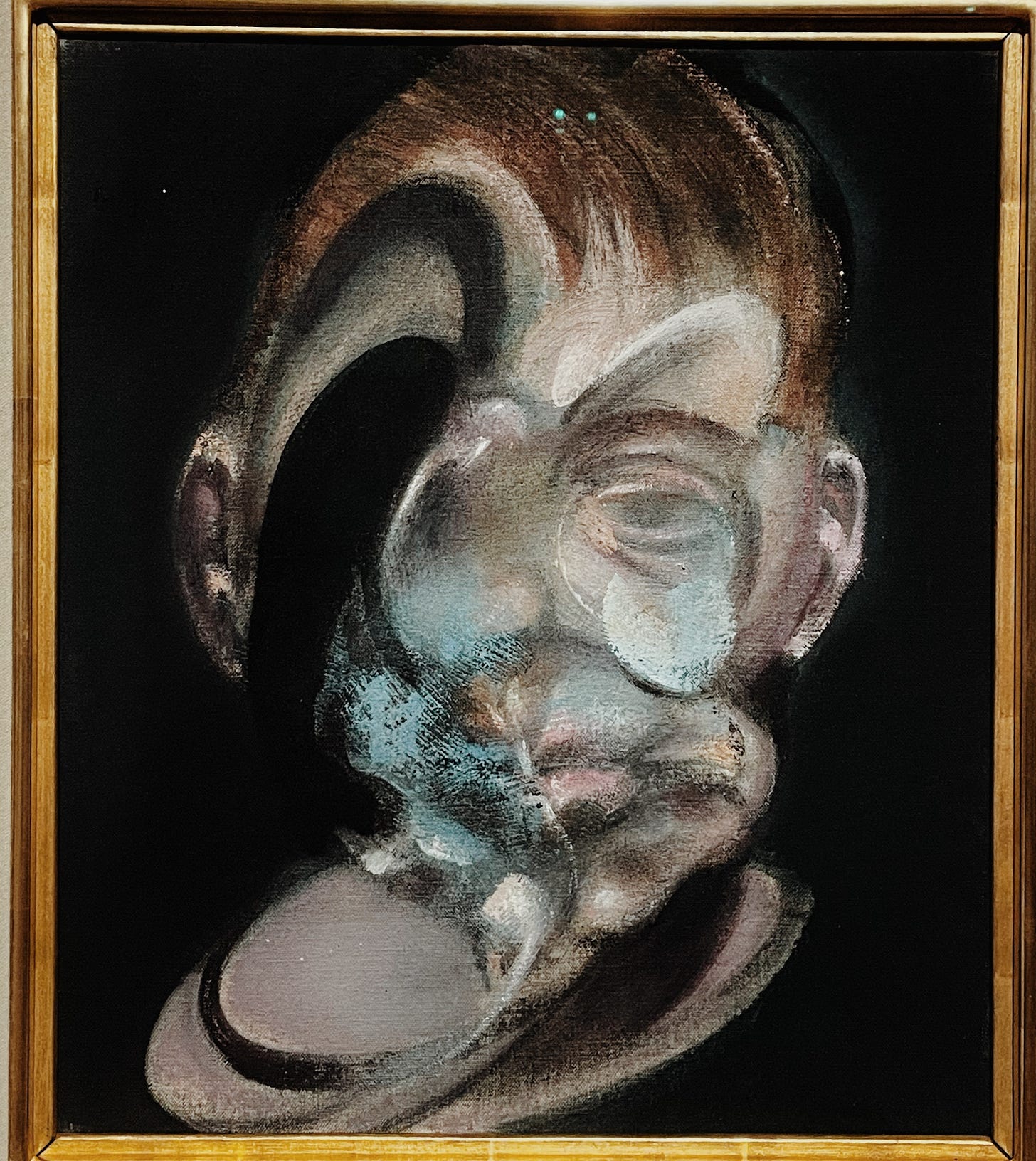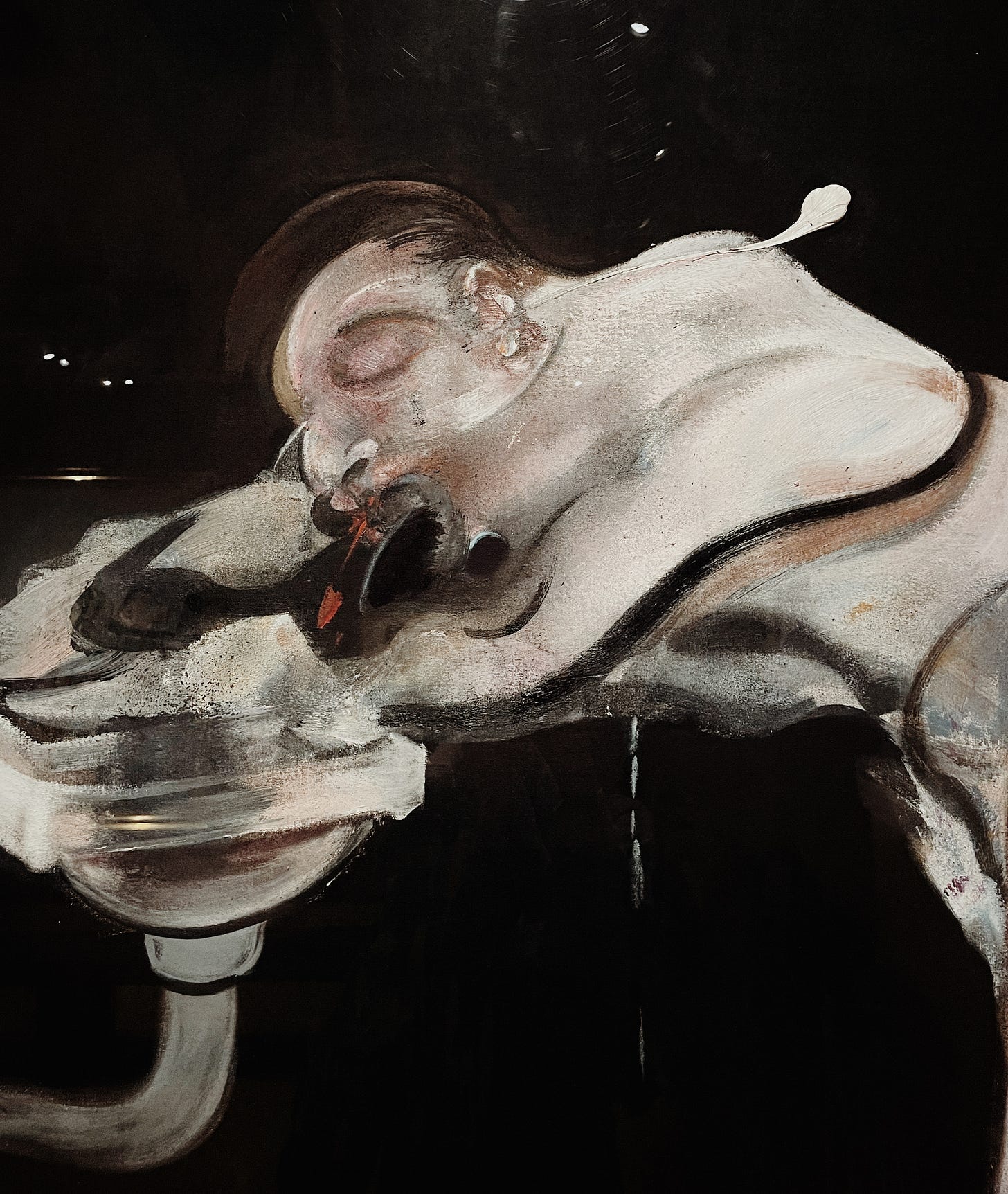Though I lack the credentials to present an essay as if I were an acclaimed art critic, I nonetheless feel compelled to pen some of my thoughts on Francis Bacon. For a long time, I have intended to articulate my reflections on his unique self-expression and the emotions of those around him, including his own, as manifested in his distinctive painting style. My recent visit to an exhibition of his paintings at the National Portrait Gallery, coupled with a minor breakdown I experienced last week, has finally pushed me to write this down. When you lay your gaze upon Francis’s work, you come face to face with your own emotions and the agony within.
Expressing myself on paper—in all its forms, from my high school notepads to textbooks, my Latin dictionary, and exam papers—was my very first escape from the environment around me during childhood. Amidst my mother's weariness, the harshness and emptiness of my father's house, the relentless pressures from his wife, teachers belittling me for my inability to concentrate and complete assignments, and my failure to fit in with the other girls, sketching and doodling on anything I could find became my ultimate refuge (along with manga). One of my tutors at the liceo scientifico I attended noticed my interest and began assigning me different tasks from the rest of the class; he encouraged me to study and replicate the marble statues adorning certain historic buildings in Italy to further develop my skills. I still remember you, Prof. Fabrizio; I hope you are doing well.
Eventually, I trained in classical fine arts practice and completed a BA in men's fashion. Although life has steered me in a different professional direction, I have not lost my connection with fine art—with any form of art into which I can escape. I immerse myself in different emotions and worlds: sometimes brutal realism, sometimes fiction, and sometimes by peering into other artists' inner realms. Perhaps this is why I absolutely love attending certain artists' exhibitions alone, spending several minutes before a painting, reading the description carefully, and then immersing myself in the universe of the artist. For some, their inner world is more vividly reflected in a single stroke of a brush than in others. Bacon's work particularly stands out to me in this regard.
We are fortunate to have many beautiful interviews recorded with Francis Bacon, along with some documentaries on his life. In one of his interviews, “Francis Bacon and The Brutality of Fact” (1987), when asked—as many interviewers do—why he depicts such brutality in his paintings, he responded: “I don’t think there is anything horrifying about my subjects. I think if you are able to get over as directly as you possibly can, the excitement of life, they have labelled that as being a horrific sight—the more violently you feel about life the more strongly you must be aware of death.”
Francis sees death and decay as integral parts of life. He doesn't view his subjects as any different from a naturally decaying rose over time. The way he applies his brush to canvas, it is as if he depicts the molecular collapse of each cell on his subject's face, melting and evaporating into a different dimension within the same timeline we inhabit. Along with his otherworldly yet brutally realistic depictions, the repressed emotions strike the observer's gaze; he is acutely aware of that as well. Francis was always very conscious of the emotional states of his sitters and their restless demeanours; he mostly used photographs of his lovers and friends, and his live sitters were also from his close circle. He mentions that he isn't interested in painting people he does not know closely; the more he gets to know them, the more interested he becomes, as he can observe those next to him—the way they speak, behave, their personhood, and perhaps their aura.
During my time at the exhibition, I was particularly intrigued by the portraits of his former lovers. I moved back and forth between some of the paintings and the actual photographs of them—Peter Lacy and George Dyer. Both have been painted by Francis numerous times. I wanted to see what he saw in both of them, whatever love and intimacy were shared. I knew beforehand that both of these relationships were extremely chaotic, riddled with intimate violence and substance abuse. What makes things even more intriguing is the fact that both of his partners passed away just before very important shows in his life, and he had to attend his exhibitions as if nothing had happened, later reflecting his breakdown in his paintings. One of the triptychs (May–June 1973) he painted of George Dyer was in the very last room. I took a seat in front of it to absorb it fully. Francis had seen his partner's dead body lying as such—painting a lover's dead body from memory, especially imagining the very last moments. It makes one pause.
I came across Rob Buchanan’s take on this triptych from Medium, and I quote directly: “But the most interesting examples of his genius for me are his poignant paintings created after, and inspired by, George Dyer's tragic death. And it is utilizing these works as evidence, I will boldly suggest that Bacon’s increasingly inconvenient boyfriend's suicide was not only a revelation, but a guilty pleasure, mortal muse and climactic release for the artist.”
This is indeed a bold statement. I can't help but wonder what Francis himself would say to this. To me, I see Francis’s depictions as deeper than being a climactic release of his guilty pleasures; they are a unique way of coping with pain, yearning, and immortalising what's left of his past lovers. He always carries them with him. He does this not only with his lovers but with all people in his close circle, carrying their gaze, their beings, and their memories with him. Beyond his stoicism, the intensity of his emotions and the weight of his psyche cannot be contained. Perhaps when one possesses such a spirit, one becomes a great artist after all.






